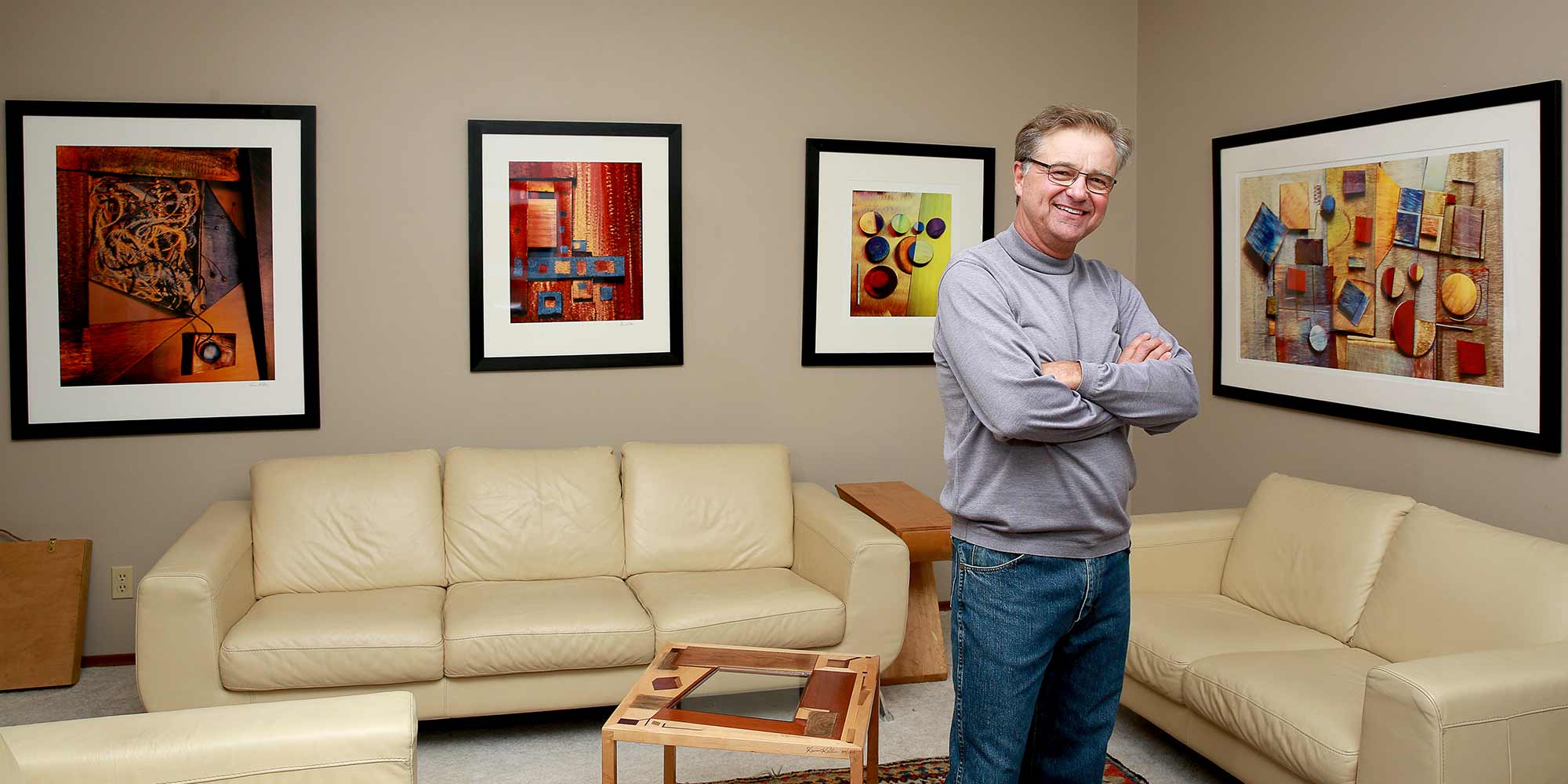Walk into Kevin Kellar’s home and two things become obvious: it’s a gallery for his art, and a showcase for a lifelong fascination with light.
What Kellar does as an artist involves photography, but the camera is simply a medium.
“Photography comes from the Greek, drawing with light – phōtos graphé,” says Kellar, who lives in Airdrie, and works as a driver for Propak.
“When a painter paints,” he explains, “he can put colour on canvas, but how do you paint with light? Light rays go everywhere.”
Kellar’s subjects are uniquely shaped scraps of metal once destined for the recycling bin. He lays them out like a cubist painter, and then photographs them on his Pentax 67, an older medium format camera he’s owned since the 1980s. He has the film developed, digitally scanned, and made into large prints.
“There’s no digital manipulation, no computer enhancement,” he says. “All of this colour has been realized with light.”
That palette of light is what immediately catches the eye. The photographs are rich with texture and depth as if painted by an artist’s brush. Each unique image is of posed geometric shapes, frozen by the shutter’s brief blink that captured light, colour and shadow in that fraction of a moment. Knowing they are photographs only increases the wonder.
How he does it is as much a part of the art as the images themselves.
“It’s about control of the light,” he says, noting that this is how he turns photography into art.
Kellar converted a room in his basement into a studio, a description he is quick to downplay.
“The whole setup, it’s so primitive, what I do.”
The room is stark; a square of white cloth on the floor cradles a few scraps of metal. Table lamps surround this, a tripod overlooking it all. There are no coloured filters, no expensive flashes, no umbrellas and no reflectors.
“That’s coloured tissue paper from Wal-Mart,” he says, pointing to a wisp of crumpled red paper.
He forms the tissue over a lamp and turns it on. The metal objects on the platform immediately transform as hidden colours are coaxed from them.
“See? It’s all about the angle of the reflectance.”
He teases out the colours through simple means.
Most scraps are flat and colourless, so Kellar grinds patterns into them, or heats them on his stove to change their hue, or both.
His camera produces 56 mm x 70 mm negatives, which, as far as grain and resolution goes, he explains, is better than digital.
Kellar’s interest in art began in grade school, where he was intrigued by the “interaction of line, shape and colour.”
He learned to use a camera on a trip to Europe, and after attending photography classes in art school he realized he had found his medium.
But it wasn’t until he worked for a business that specialized in sheet-metal fabrication that he found his muse.
“There were all these geometric (scraps), and it reminded me of art history classes and the work of (Wassily) Kandinsky.”
Kellar says the Russian painter and other cubists influence him.
He took the scraps of stainless steel home and laid them out to photograph, but wasn’t satisfied.
“I thought, ‘how do I get this be more painterly, because I want this to be art.’”
Since then, Kellar’s skill at “painting with light” has evolved into a unique art form that he occasionally sells.
“There’s no digital manipulation, no computer enhancement. All of this colour has been realized with light.”
“I’ve never seen anything like this … but people need bread before they need art.”
Interestingly, he approaches his woodworking with the same intent – manipulating light.
But that’s another story.




